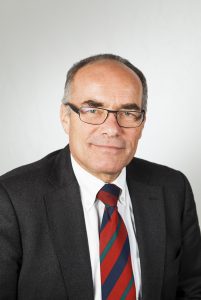Editorial
When mining metals and industrial minerals it is inherent in the process that a certain proportion of the productive material will be left behind in the tailings. While these mineral residues, some of which are recyclable, were not the focus of attention at the time the minerals were being mined, they have more recently taken on growing significance, as in the case of rare-earth metals. With the international demand for raw materials growing, and the metal content of primary ores tending generally to decline, we are now seeing a continuous escalation in the quantity of material being disposed off in spoil tips. Enormous quantities of mining refuse from raw-materials extraction are now to be found in the spoil tips and tailing ponds of current and former mining countries and work has been under way for a number of years now to develop and implement strategies and technologies for the sustainable, environmentally friendly and safe storage of mine tailings, as well as to provide options for exploiting this potentially valuable material. This latest issue of Mining Report Glückauf focuses on this “secondary” raw-materials production process.
Germany is now almost completely dependent on imports for the supply of its metallic resources. Against this background, and with a view to securing supplies of raw materials for German industry, the Federal Institute for Geosciences and Natural Resources (BGR) is currently working with its affiliate German Mineral Resources Agency (DERA) in a number of areas and is involved in three international cooperation projects in Chile, Brazil and South Africa where secondary mining is the key remit.
The German-Chilean Chamber of Industry and Commerce recently held a webinar on the reprocessing of mining residues for use as a source of secondary raw materials. This event included presentations on the potential that Chile has to offer in this area, as well as on related technology being developed in Germany, Finland and Ireland.
In 2018 the Helmholtz Institute Freiberg for Resource Technology (HIF) initiated the recomine alliance to develop regionally grown competences in the field of environmental and resource technologies with a view to exploiting diverse raw-material sources. The remediation of abandoned sites storing contaminated mining waste, such as exist, e. g., in the Ore Mountains of Saxony, could be financed by recovering and recycling the raw materials they contain.
In addition to the reprocessing of mining waste as a source of raw materials another initiative of increasing significance involves the recycling of metallurgical residues such as electric arc furnace slag.
This issue’s section on post-mining focuses on three selected topics: the Coal Regions in Transition initiative, by which the EU hopes to bring forward the withdrawal from coal within the community; the risk management strategy for abandoned mine sites, as practised by the mining authorities in North Rhine-Westphalia; and the application of modern geo- and environmental monitoring methods for the sustainable management of geological resources.
With my best regards
Dipl.-Ing. Andreas-Peter Sitte
Chief Editor Mining Report Glückauf, Essen
